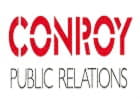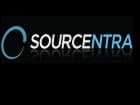Harnessing the power of big data and analytics can be difficult for small businesses. Limited time, experience, and finances are often the main obstacles preventing small business owners and executives from utilizing powerful analytic tools. Applying analytic strategies to a company’s finance and accounting department/function is a tremendous opportunity for small businesses to expose themselves to the power of analytic tools and improve financial visibility and strategic decision making. Here are the 3 ways small businesses can implement analytic tools in their finance and accounting departments:
1.) Visualize the General Ledger
Analytic programs, such as Tableau, allow users to analyze large data sets through powerful and interactive visualizations. A general ledger is a terrific start to exploring a company’s financial data as it contains a significant amount of accounting activity. A small business can quickly pair the abilities of visualization programs with the data contained in its general ledger to generate insights into the company’s historical financial performance. One example is to create profit &loss dashboards that allow executives to explore monthly performance while simultaneously analyzing transaction level detail. Once the dashboards are built, all analysis can be completed with the click of a mouse. Moreover, data contained in the general ledger allows users to create dashboards to track financial Key Performance Indicators (KPIs). KPIs vary by industry, but are useful in assessing a company’s financial health, strategic decision making, and overall performance. Using dashboards to track financial activity will immediately increase executives’financial visibility of their company.
2.) Dig into Sales & Receivables
A company’s sales journal and aging of accounts receivable are useful reports that contain valuable financial data. Sales journals include valuable information of dollars earned, customers, date of sale, and the product/service sold. Meanwhile, aging of accounts receivables displays outstanding sales (often grouped in agingdays buckets) that a company has yet to collect. Companies can create insightful dashboards using this financial data paired with customer information. Analyzing a company’s sales in conjunction with its outstanding accounts receivable will provide unique insights for top customer analysis.Moreover, geographic sales dashboards provide owners and executives the ability to track the sales performance by region/state. This proves extremely useful in understanding a company’s sales concentrations as well as assisting in determining where marketing resources should be allocated. Business owners and executives will improve strategic decision making when applying analytic strategies to their company’s sales data.
3.) Work with a CPA Firm
As trusted advisors, Certified Public Accounting firms are typically exposed to a large amount of financial data. Through offering consulting and analysis services, CPA Firms deliver experience that assists their clients in implementing and using powerful analytic tools to improve financial decision making. Small businesses with limited resources should look to capitalize on a CPA Firm’s ability to provide analytics consulting services that complement traditional audit and tax functions. Working with a CPA Firm to complete financial analysis will provide small business owners and executives the ability to effectively leverage the power financial analytics.
Matt Paul, MBA can be contacted at Chestnut Hill, MA CPA firm, Samet & Company, PC, at MattP@Samet-cpa.com or 617-731-1222.














